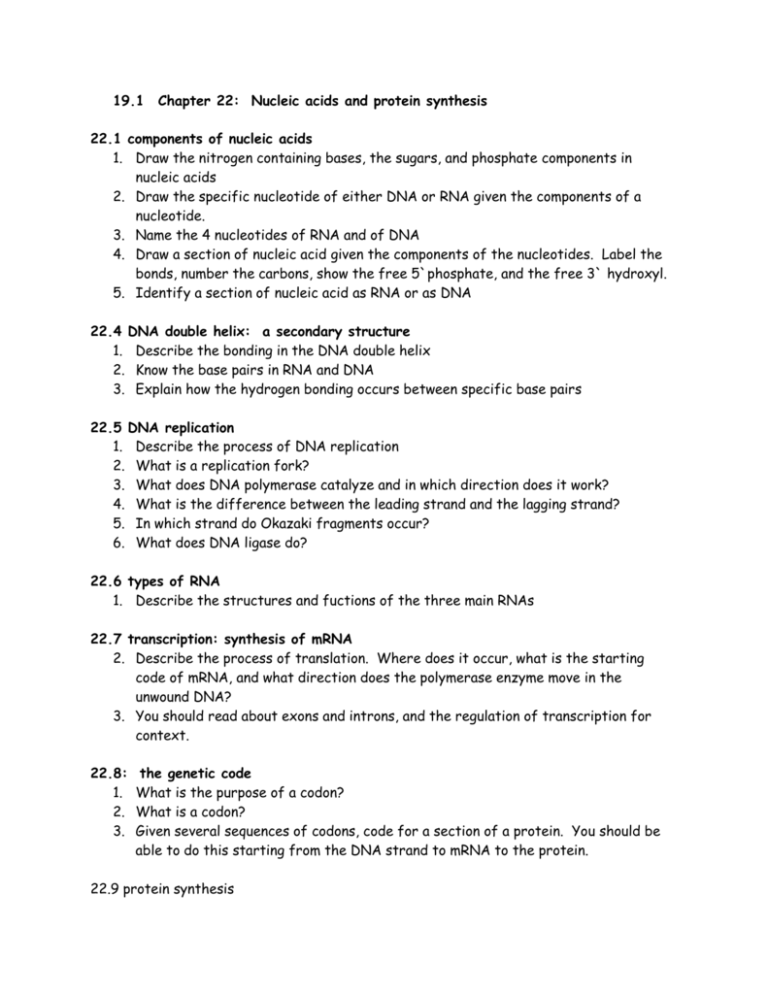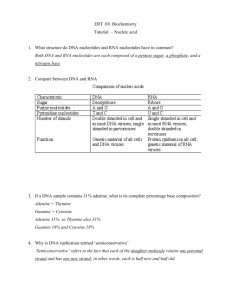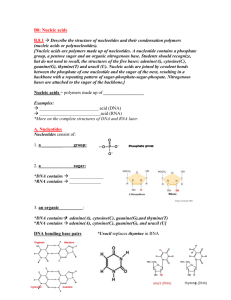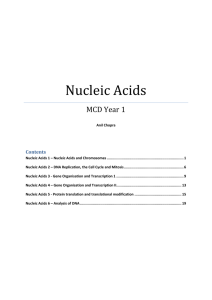19.1 Chapter 22: Nucleic acids and protein synthesis
advertisement

19.1 Chapter 22: Nucleic acids and protein synthesis 22.1 components of nucleic acids 1. Draw the nitrogen containing bases, the sugars, and phosphate components in nucleic acids 2. Draw the specific nucleotide of either DNA or RNA given the components of a nucleotide. 3. Name the 4 nucleotides of RNA and of DNA 4. Draw a section of nucleic acid given the components of the nucleotides. Label the bonds, number the carbons, show the free 5`phosphate, and the free 3` hydroxyl. 5. Identify a section of nucleic acid as RNA or as DNA 22.4 DNA double helix: a secondary structure 1. Describe the bonding in the DNA double helix 2. Know the base pairs in RNA and DNA 3. Explain how the hydrogen bonding occurs between specific base pairs 22.5 DNA replication 1. Describe the process of DNA replication 2. What is a replication fork? 3. What does DNA polymerase catalyze and in which direction does it work? 4. What is the difference between the leading strand and the lagging strand? 5. In which strand do Okazaki fragments occur? 6. What does DNA ligase do? 22.6 types of RNA 1. Describe the structures and fuctions of the three main RNAs 22.7 transcription: synthesis of mRNA 2. Describe the process of translation. Where does it occur, what is the starting code of mRNA, and what direction does the polymerase enzyme move in the unwound DNA? 3. You should read about exons and introns, and the regulation of transcription for context. 22.8: 1. 2. 3. the genetic code What is the purpose of a codon? What is a codon? Given several sequences of codons, code for a section of a protein. You should be able to do this starting from the DNA strand to mRNA to the protein. 22.9 protein synthesis 1. Describe the process of translation: activation, initiation, and termination. 2. Be able to draw a general picture of tRNA. Show where the codon is, the acceptor stem, and the growth of the protein. 3. Figure 22.21 is important. Skip 22.10, 22.11, and 22.12. These are all related more to biology or your micro class!











